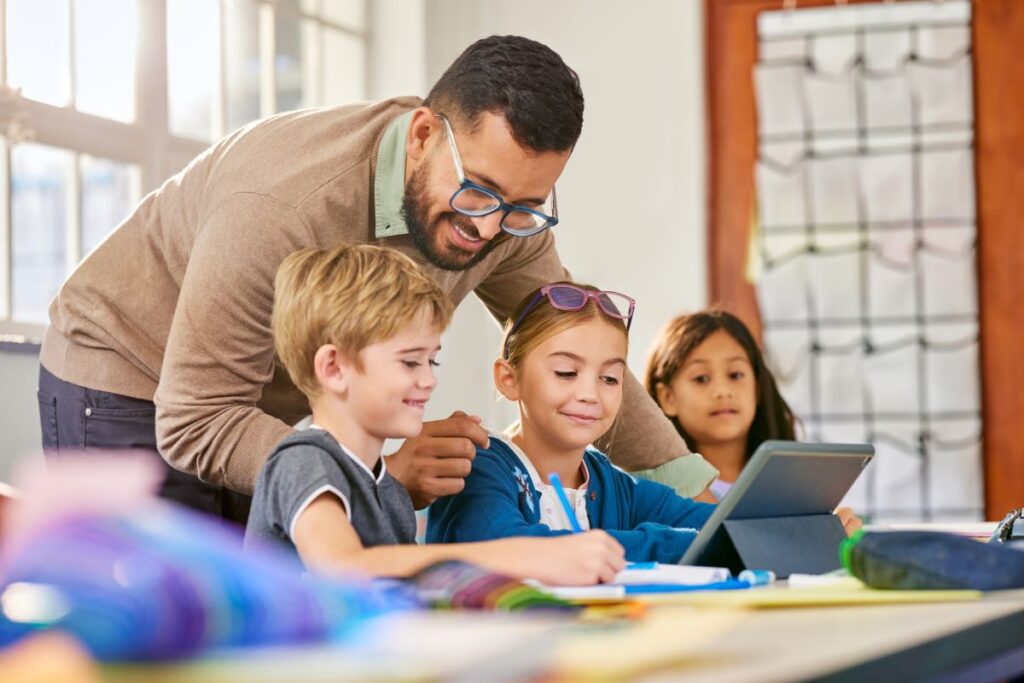Have you ever walked into a classroom and felt the energy—not just of the students, but of the learning itself? Where students aren’t just passive recipients of information, but active participants in their own educational journey? This isn’t a pipe dream; it’s the reality of a student-centered approach, and it’s the most powerful strategy we have for preparing students to thrive.
Think for a moment about a typical lecture-based classroom. Information flows one way: from teacher to student. Now, envision a different scene. A group of students huddles around a whiteboard, excitedly debating a problem. Another student, working independently at a computer, is researching a topic of personal interest, while a small group receives targeted instruction from the teacher.
The teacher isn’t the sole source of knowledge; they are a facilitator, a guide, and a mentor. This is the essence of student-centered learning, and its transformative power is the reason it’s no longer a buzzword, but a foundational pillar for modern education.
What is Student-Centered Learning?
At its core, student-centered learning is an educational approach that shifts the focus of instruction from the teacher to the student. It recognizes that each learner is unique, with their own interests, motivations, and learning styles. The teacher’s role evolves from being a content delivery system to a designer of learning experiences. This framework is built on a few core tenets:
- Student Agency and Voice: Empowering students to take ownership of their learning by giving them choices in what and how they learn.
- Collaboration and Community: Fostering a classroom environment where students learn with and from one another.
- Differentiated Instruction: Tailoring instruction, curriculum, and assessment to meet the individual needs of all learners.
- Authentic Assessment: Evaluating learning through real-world tasks and projects that demonstrate deep understanding.
The Components of a Student-Centered Classroom
Creating a student-centered environment goes beyond a seating chart change. It requires a deliberate shift in philosophy and practice. Here are key components that make this approach work, ensuring not just academic growth, but also the development of essential life skills.
Fostering Student Empowerment and Voice
In a truly student-centered classroom, students are not just told the rules—they help create them. Involving students in the co-creation of classroom norms, project rubrics, and even the evaluation of learning conditions empowers them. They gain a sense of ownership over their environment and a deeper understanding of accountability, both for themselves and for their peers.
Cultivating Collaborative Learning
The modern workforce is built on collaboration. By designing lessons that require teamwork and group problem-solving, we teach students how to communicate effectively, resolve conflicts, and leverage each other’s strengths. This moves beyond simple group work and into a space of genuine mutual respect and shared inquiry.
Prioritizing Restorative and Humanizing Practices
Instead of relying on a system of punishment and external rewards, a student-centered classroom focuses on understanding the root causes of behavior.
Restorative practices and a relationship-focused approach allow us to see a student’s misstep as a moment for growth, not simply a rule violation. By focusing on repairing harm and building relationships, we create a safe space where students feel seen and understood.
Building Strong, Relationship-Focused Connections
Authentic learning cannot happen without trust. Taking the time to build meaningful connections with students, showing genuine curiosity about their lives, and being culturally responsive transforms the classroom dynamic. This creates a foundation of psychological safety where students are willing to take risks and engage deeply with the material.
Designing Flexible and Dynamic Spaces
The physical classroom should be as adaptable as the learning it supports. A flexible layout with movable furniture, collaborative workspaces, and quiet zones allows for a variety of activities—from small-group discussions and independent work to whole-class instruction. This flexibility supports the diverse needs of all learners and promotes movement and engagement.
Establishing Clear, Co-Created Expectations
While flexible, a student-centered classroom is not chaotic. It is built on a foundation of clear, consistent, and co-created expectations. When students have a hand in defining the norms, they are more likely to understand and adhere to them.
Teachers consistently model desired behaviors and use these shared norms as a guide for accountability, creating a predictable and supportive environment.
Teaching De-Escalation and Conflict Resolution
Conflict is a natural part of any community. Instead of simply punishing a disagreement, a student-centered approach teaches students to de-escalate emotional situations and use a structured process to resolve conflicts.
Using restorative questions and practices helps students reflect on their actions, understand their impact, and work towards repairing relationships.
Recognizing and Addressing Systemic Oppression
Education exists within a broader societal context. A truly student-centered approach acknowledges how issues of systemic oppression, status differences, and microaggressions can influence classroom interactions. By creating a space where these difficult topics can be discussed openly and safely, we equip students to navigate a complex world with empathy and a commitment to justice.
Implementing Regular Feedback Loops
The student voice is a critical source of data. Therefore, regularly soliciting and integrating student feedback on the learning environment, the curriculum, and community-building methods demonstrates that their opinions are valued. This process not only improves the classroom but also teaches students the importance of constructive critique and continuous improvement.
The ROI of Student-Centered Learning
The investment in a student-centered approach yields a powerful return. It moves beyond a focus on test scores to cultivate the skills our students will need to succeed in a rapidly changing world: critical thinking, creativity, collaboration, and communication.
It builds resilience, fosters a lifelong love of learning, and ensures our students are not just knowledgeable, but also adaptable, compassionate, and empowered.
By committing to a student-centered mindset, we are not just changing how we teach; we are transforming what it means to learn. We are building a future where every student feels seen, valued, and capable of achieving their full potential.
Frequently Asked Questions (FAQs)
Q: What is the main difference between student-centered and teacher-centered learning?
A: In teacher-centered learning, the instructor is the primary source of information, and students are passive recipients. Student-centered learning shifts the focus to the student, who is an active participant in their education, while the teacher acts as a facilitator and guide.
Q: What are the key benefits of this approach for K-12 students?
A: The benefits extend beyond academic performance. Students develop essential 21st-century skills like critical thinking, problem-solving, and collaboration. It also increases student engagement, motivation, and a sense of agency, preparing them to be lifelong learners.
Q: How can a teacher begin to implement student-centered learning in their classroom?
A: Start small. Begin by giving students choices in assignments, incorporating collaborative projects, or using exit tickets to gather student feedback. Slowly build towards more comprehensive changes, like co-creating classroom rules and designing lessons around student-led inquiry.
You’ve got important career goals — we have the graduate program to get you there. Check out our available graduate degree programs to advance your career today!




